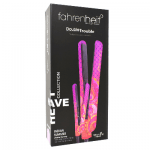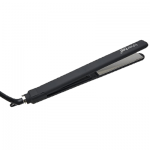If you don’t know bantu knots by the name, you definitely know them by looking at them. Bantu knots have been a hairstyle for hundreds of years, dating back to its roots with the Zulu people in Africa. This look is fashionable as well as functional.
Today, I am going to talk about the history of the hairstyle, why it is good for your hair, and how to accomplish it.

History
Bantu Knots originate out of South Africa. They are also called Zulu knots as a homage to the creators of this hair style. While this look is fashionable, they used it for practicality in everyday wear as well as a way to protect their hair from damage.
Pros of Bantu Knots
Like I said, the bantu knots hairstyle is more than what meets the eye. There are loads of benefits from this look. If your hair is fried from overuse of heat tools or other styling that can wear and tear on your hair, this is a great alternative to allow your natural locks to revive back to their best versions.
It can also help bring out your natural curls which can double as a major pro for those who seem to have lost their curls over time. Years of damage and weight can remove our natural curls, so think of bantu knots as a reversal of these many years in a much shorter period of time.
How to
Now to the good stuff. Learning how to do bantu knots is relatively simple. All you will need is a bit of patience and some attention to detail.
1. Prep
First, you will need to prep your hair. This means washing it with the proper products. Use a sulfate free shampoo and conditioner as well as a leave-in conditioner to give your hair the needed moisture to prevent frizz. This is also a great time to incorporate any extra love your natural hair might need.
While bantu knots are good for your hair, you won’t be able to style or apply product through your hair while your knots are in, so give your hair the extra loving beforehand.
2. Separate
This is where you’ll need to make some decisions. Depending on how many sections you want to add in, you’ll need to edit this part a bit. To start off, however, separate your hair into four main sections. Make sure your hair is fully brushed through as we want the easiest separation and twisting later on. Make sure to create clean edges between each section as you will want it to look clean in the final product.
From those four sections, you can divide each one more time or more depending on preference. If your hair is shorter, I would suggest opting for more sections to ease the stress of pieces sticking out. Vice versa, you can go with just a few sections for longer hair.
4. Cream
Grab a curl cream for the next step. This should be applied from root to end for each section, so take your time. You want to make sure each section has cream evenly dispersed throughout the entire strand for the best results. The cream is an essential step to smooth and well laid knots that will last. You can also use select mousse.
4. Divide
Now we are divided the sections into half sections. To make things easier, separate each half section into a small ponytail. This will look quite overwhelming when it starts to look like a head full of tiny ponytails, but trust the process.
You can also incorporate a few cornrows in between the main four sections to really create some separation and add a pop of something unique. If not, the classic bantu knot look will suit just fine without.
5. Twist
Now, grab each half of the half section ponytails and twist them around each other until you form small buns from the ponytails. This might take some practice, but make sure it is how you like it as this is our final product bantu knot. A big tip is to twist from the roots first. This will ensure the twist is tight and looks the best as you move down the hair strand.
6. Secure
When you’ve created the perfect bun, it is time to knot it and secure it off. Grab the bun and pull it into a knot. You will have a tiny bit of the end of your hair left, but tuck this into the knot. If you’re worried about fallout, you can use a bobby pin to ensure it stays. Continue this for your entire head to create the perfect bantu knots!


